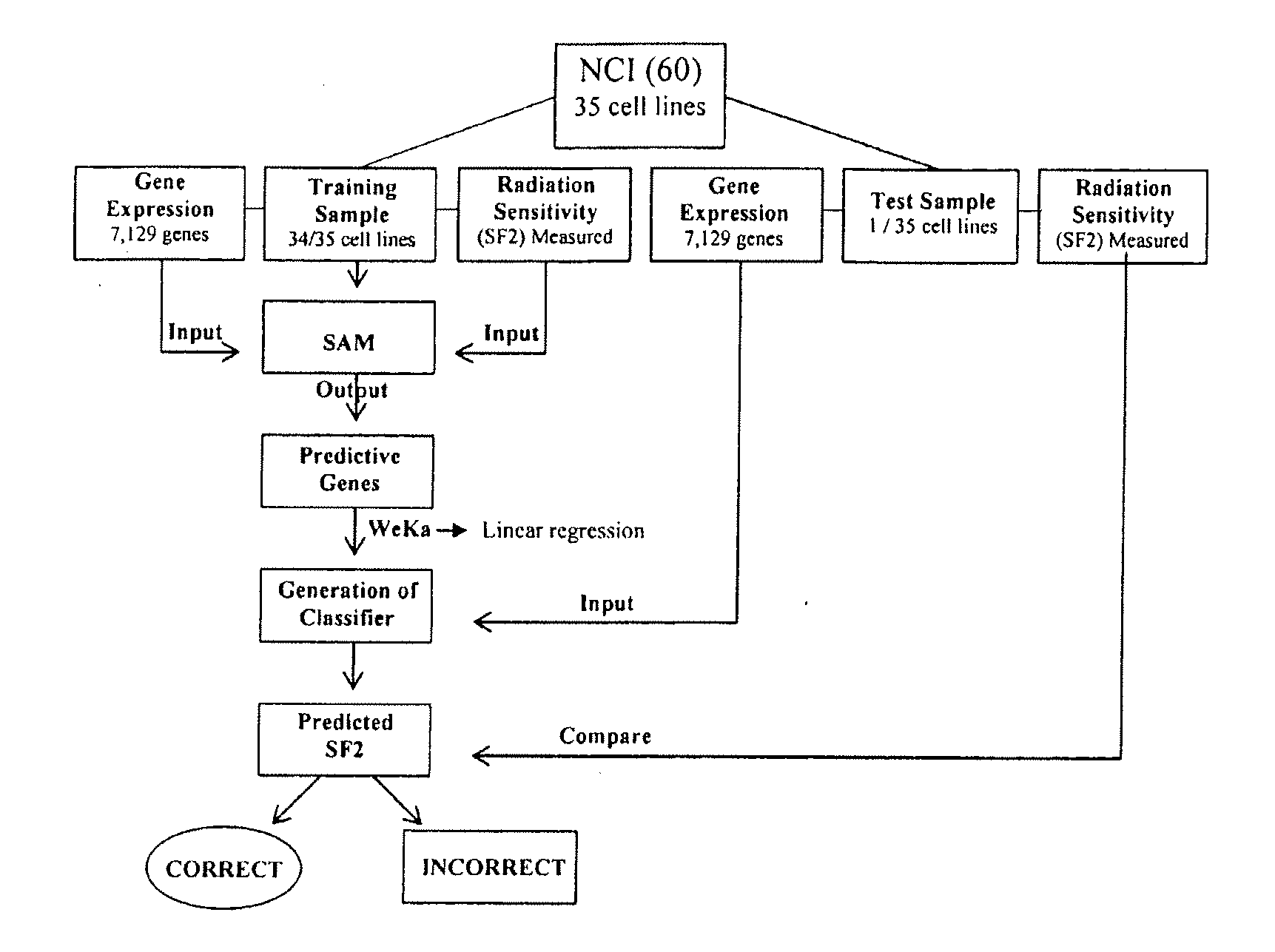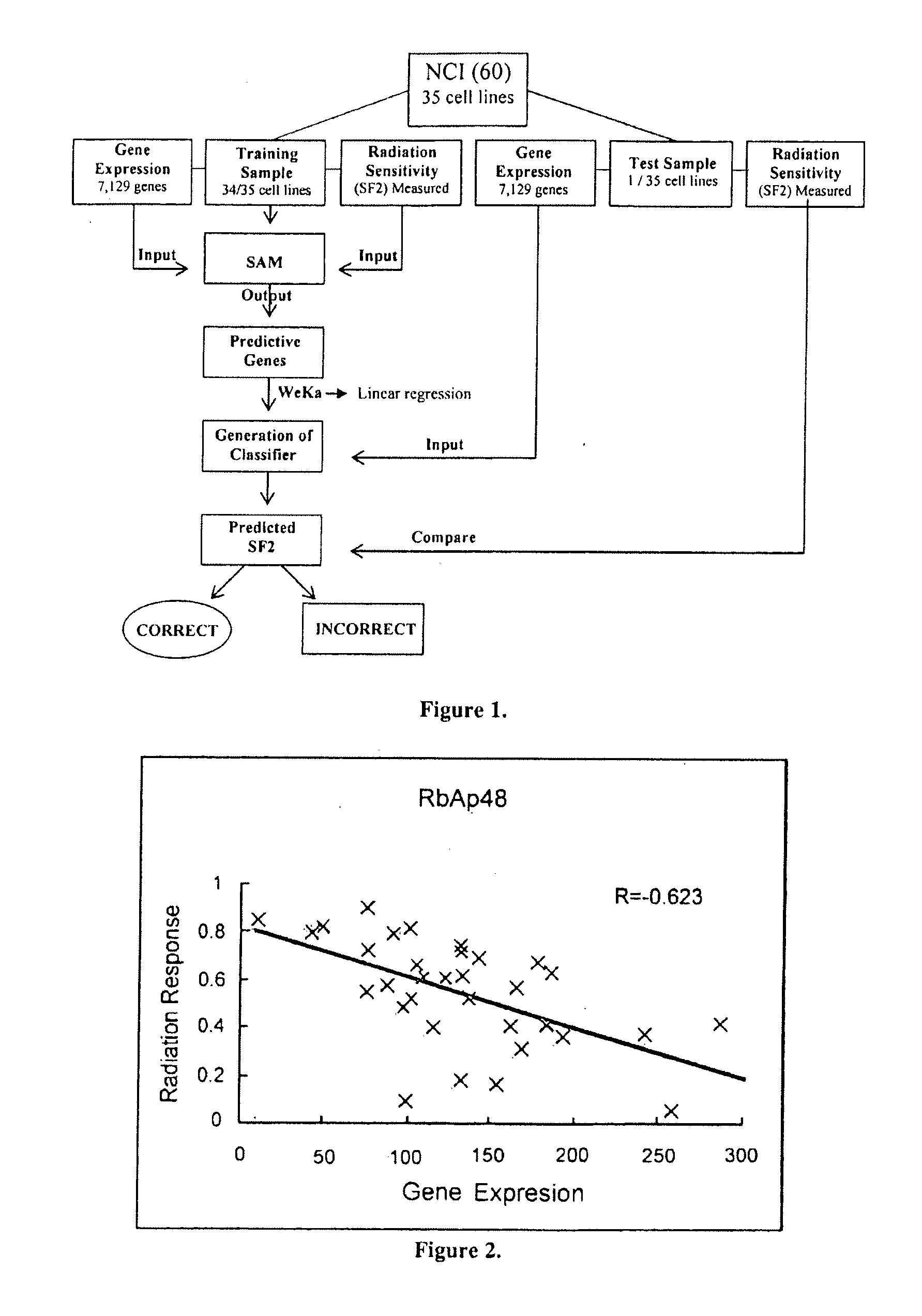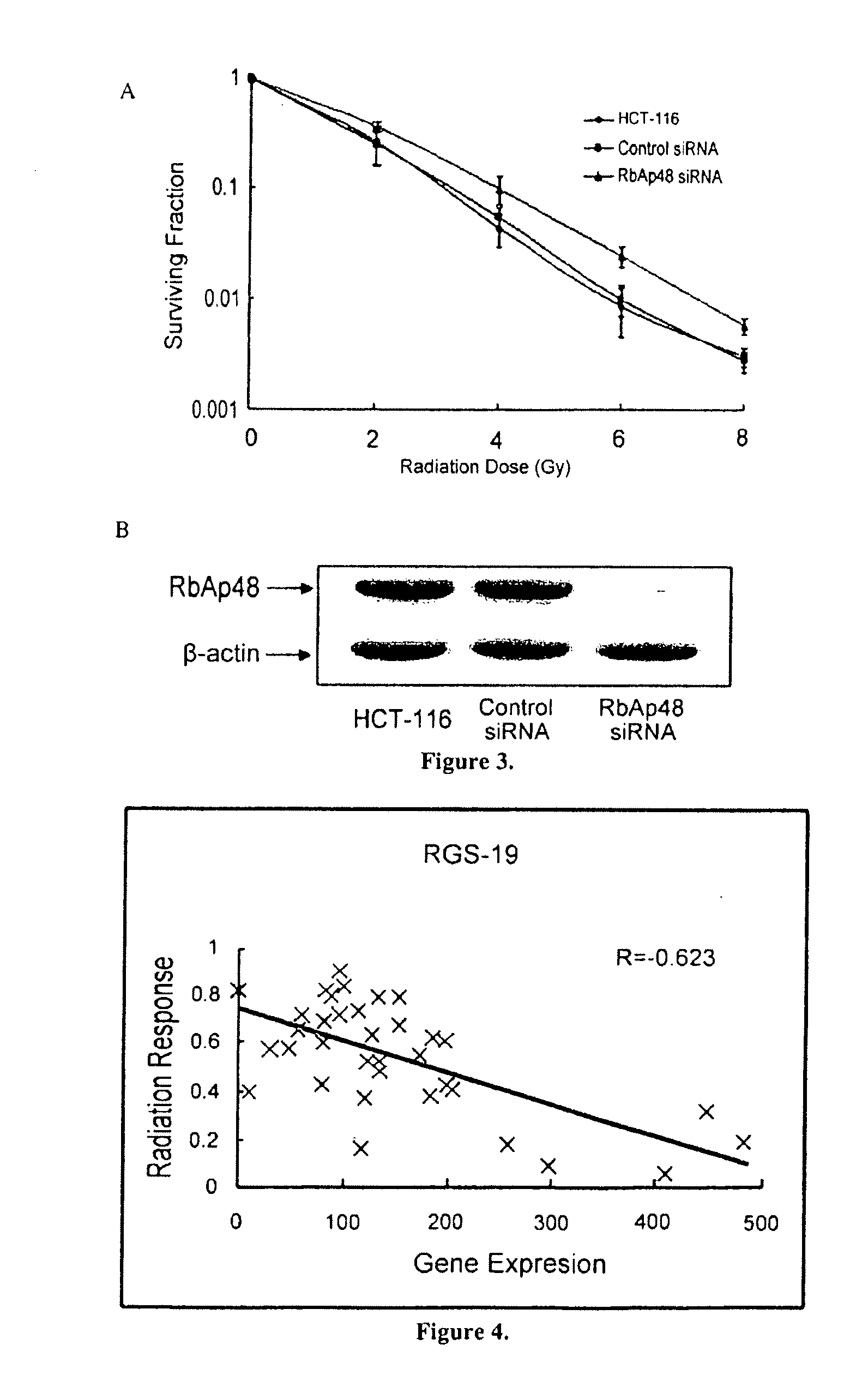Predictive Radiosensitivity Network Model
a network model and radiosensitivity technology, applied in the field of cancer treatment, can solve the problems of inability to capture and study the continuous nature of many phenotypic features in diseased and normal states, and the dynamics of network component interactions have remained mostly undefined, so as to facilitate the study of radiation response, improve the ability to define network dynamics, and improve the understanding of variables
- Summary
- Abstract
- Description
- Claims
- Application Information
AI Technical Summary
Benefits of technology
Problems solved by technology
Method used
Image
Examples
Embodiment Construction
[0039]A multivariate linear regression model of gene expression and radiosensitivity (SF2) was developed in a 35 cell line database within the context of an accurate radiation sensitivity classifier. The clinical value of a radiosensitivity predictive model is significant, therefore an understanding the intricacies of its operation were critical. The predictive algorithm identified five components of functional / biological relevance to the network that proved best at building the most accurate predictor, genes rbap48, top1, rgs19, r5pia and an unknown gene. FIG. 1 shows a schematic representation of the classifier algorithm. As shown in FIGS. 2-5, rbap48 and rgs-19 were biologically-validated as network components. Consistent with model predictions, depicted in FIG. 2, siRNA knockdown of rbap48 in HCT-116 cells, seen in FIG. 3(b), resulted in radioresistance as seen in FIG. 3(a). Next, G-protein signaling regulator rgs-19 was overexpressed in MDA-MB231 cell lines, seen in FIG. 5(b). ...
PUM
 Login to View More
Login to View More Abstract
Description
Claims
Application Information
 Login to View More
Login to View More - R&D
- Intellectual Property
- Life Sciences
- Materials
- Tech Scout
- Unparalleled Data Quality
- Higher Quality Content
- 60% Fewer Hallucinations
Browse by: Latest US Patents, China's latest patents, Technical Efficacy Thesaurus, Application Domain, Technology Topic, Popular Technical Reports.
© 2025 PatSnap. All rights reserved.Legal|Privacy policy|Modern Slavery Act Transparency Statement|Sitemap|About US| Contact US: help@patsnap.com



